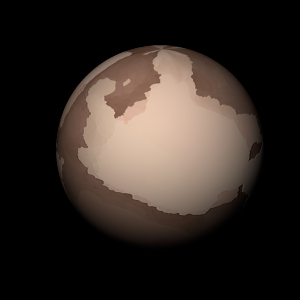|
|
Space Astro
|
Info for exoplanet "Qeqaracal Cyl"
| Scientific (actual) data |
|---|
| Name | BD+55 362 b |
| Planet status | Confirmed |
| Mass sini | 0.72 |
| Orbital period | 265.59 |
| Semi major axis | 0.78 |
| Orbit eccentricity | 0.27 |
| Discovered | 2021 |
| Updated | 2021-05-21 |
| Omega | 225.56 |
| Tperi | 2458190 |
| K | 25.12 |
| Publication | Published in a refereed paper |
| Detection type | Radial Velocity |
| Mass measurement type | Radial Velocity |
| Star name | BD+55 362 |
| Right ascension | 23.96° |
| Declination | 56.7° |
| Mag v | 9.2 |
| Star distance | 52.65 |
| Star sp type | K3 |
| Wikipedia article | BD+55 362 b |
Back
| |
| Fictional info (?) |
|---|
| Suggested name | Qeqaracal Cyl |
| Planet type | Cold planet |
| The polar regions are constantly below 306°K (33°C).
The outer atmosphere is visibly segregated into several bands at different latitudes, resulting in turbulence and storms along their interacting boundaries. |
| Atmosphere | Carbon dioxide | 77% |
| Hydrogen deuteride (HD) | 18% |
| Xenon | 2.4% |
| 2H2O | 0.69% |
| Oxygen | 0.59% |
| Ammonia | 0.46% |
| Atmospheric pressure | 4 bar |
 |
| No known satellites |
| Google search for Qeqaracal cyl |
|
Website by Joachim Michaelis
|
|
|
|